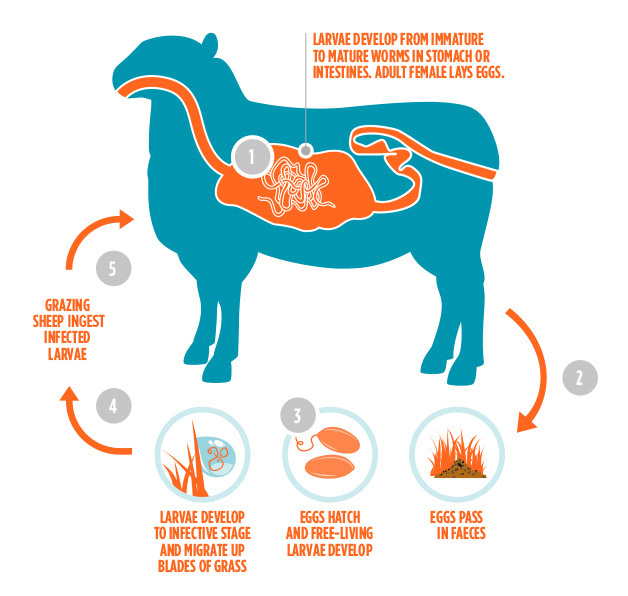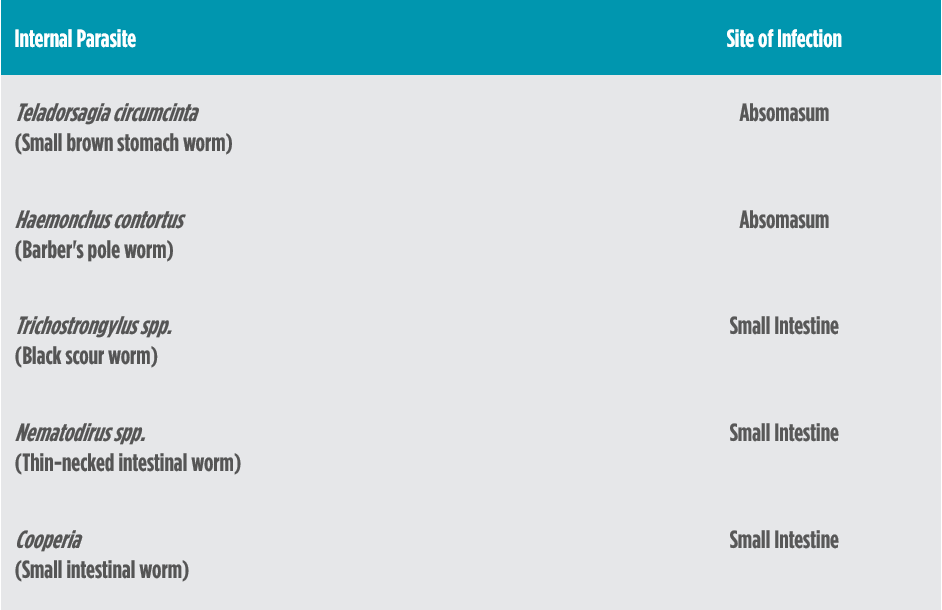COMMON WORMS AND LIFECYCLES
ROUNDWORMS

Step 1
All roundworms begin as eggs. These eggs are produced by female adult roundworms living in the gut of the animal.
Step 2
These eggs are passed out in the animal’s dung onto the ground.
Step 3
The eggs hatch into larvae, given the right environmental conditions (sufficient moisture levels and temperature).
Step 4
The larvae develop and become infective. They move up blades of grass in water droplets, where they can be eaten by grazing sheep.
Step 5
Once ingested, the larvae enter the gut of the animal and either develop into adults quickly, or they may stay in an “inhibited” stage until a later time (for example, during a summer drought or winter cold). When the external conditions are favourable for worm survival, the inhibited larvae develop into adults.
The table below offers a summary of the most important roundworms of sheep in NZ
